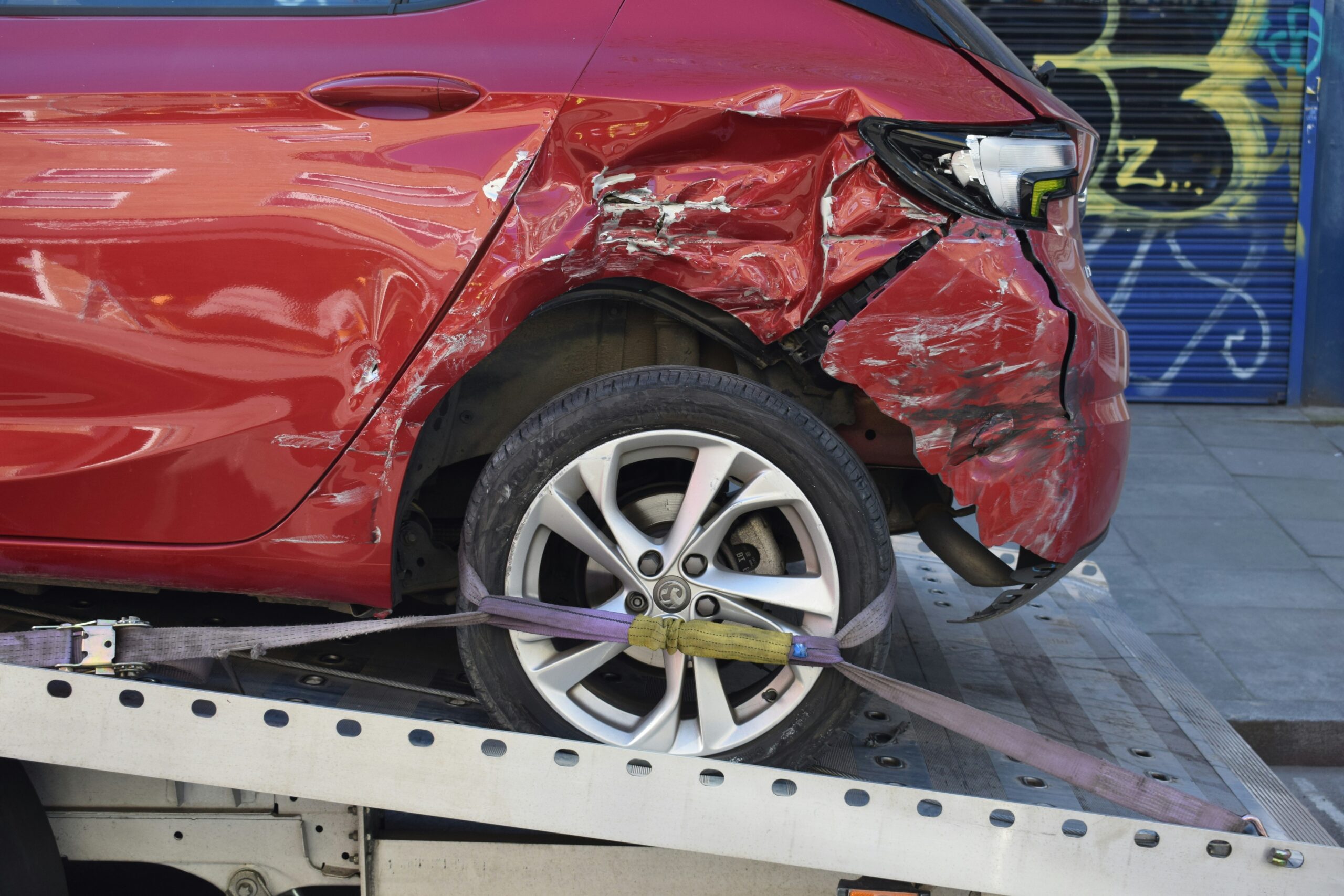If your car is totaled or stolen, gap insurance will help cover the difference between the actual cash value of your vehicle and the amount that’s left on your loan or lease. You can either add gap coverage to your existing car insurance policy or you can purchase it directly from the dealership where you bought your car.
Gap insurance covers what you owe on your car loan after a total loss
New cars depreciate quickly, losing around 20% of their value in their first year. Because of that, when you take out a car loan or lease a new car, you may end up owing more than the vehicle is worth for a while. This is known as being upside-down on your loan or lease.
If your car is stolen or declared a total loss, full-coverage insurance will pay up to the actual cash value (ACV) of your car, which is the replacement cost minus depreciation.
If you’re upside-down on your loan, standard insurance likely won’t cover the entire balance of your loan or lease. You’ll still have to pay off the remaining amount, even though you can’t drive the car anymore.
Gap insurance—also known as guaranteed asset protection—is an optional type of insurance that pays for the difference between your car’s ACV and the amount you owe on your lease or loan if you have to file a total loss insurance claim.
NEED TO KNOW:As part of the terms of your car loan or lease, your lender may require you to carry collision insurance and comprehensive insurance (together known as “full coverage”) as well as gap insurance on your vehicle.
When is gap insurance worth it?
According to the Insurance Information Institute (III), investing in a gap insurance policy is a good idea if you have a new vehicle that’s leased or financed and currently owe more than your car is worth.
You should buy gap insurance if:
- You lease or finance a car
- Your loan term is five years (60 months) or more
- You made a small down payment (less than 20%)
- You rolled negative equity from your previous car loan into your new car loan
- You have a model that depreciates faster than the average vehicle
You probably don’t need gap insurance if:
- Your car loan amount is less than the car’s value (or only slightly more)
- You can afford to pay the difference between the loan amount and the car’s cash value out of pocket
- Your car is too old to qualify for gap coverage.
Is gap insurance worth it on a used car?
If you lease or finance a late-model used car and you think you’ll owe more on it than it’s worth, gap insurance may be helpful. However, gap insurance is typically limited to cars that are three years old or newer, so it may not be available for most used vehicle purchases.
If you have a small loan—less than the value of the vehicle—or your loan is shorter than 60 months, you may not need gap insurance. And if you own your car outright, you don’t need gap insurance at all.
Is gap insurance worth it on a new car?
Gap insurance is usually worth it on a new car, especially if you had a smaller down payment (less than 20% of the car’s value) or you bought a vehicle with a particularly high depreciation rate.
You might also need gap coverage if your loan terms are longer than 60 months. When you take out a longer loan, you make smaller monthly payments—which means your vehicle is more likely to depreciate faster than you’re paying it off.
Also consider gap insurance if you rolled over negative equity from your last car loan into your new loan. Gap insurance won’t cover that negative equity, but since your total loan amount will be bigger, your car may depreciate faster than you can pay off the loan.
The bottom line: Because gap insurance is inexpensive, it won’t have much of an impact on your car insurance rates, but the protection can be invaluable in the event of a total loss
Learn more about gap insurance in your state: AZ, FL, CO, GA, HI, IN, LA, MA, MD, MI, NV, NY, OH, OK, TN, TX, UT
Gap insurance costs less from an insurer
You can purchase gap insurance from a car insurance company, through the car dealer when you purchase your vehicle, or through the bank or credit union where you finance it.
- If you buy gap coverage through your car insurance company, it will be added to your annual policy amount and usually costs around $20 a year.
- If you buy gap coverage through your car dealership or financing company, the entire policy amount will be added to your loan balance. This usually costs between $200 and $400 dollars, although you will have to pay interest on the difference.
The cost of gap insurance is mainly influenced by where you purchase it. If you buy it through your dealership or lending company, here’s what you’ll pay on average:
- If your loan or lease balance is between $10,000 and $20,000: Your gap insurance will usually cost around $200 for the total policy if you get it through your lender.
- If your loan or lease balance is between $20,000 and $30,000: Your gap insurance will usually cost between $200 and $300 for the total policy if you get it through your lender.
- If your loan or lease balance is over $30,000: Your gap insurance will usually cost around $400 for the total policy if you get it through your lender.
Most drivers only need to keep gap insurance for 1–2 years. If you purchase gap coverage through your insurance company, you’ll usually pay about $20–$100 in total—making it much more affordable than purchasing gap through a dealership or lending company.
You might expect to pay $1,985 per year for full coverage insurance in total if you choose to purchase gap insurance. From the insurer this may range between $20 to $50 a year for just the gap insurance while from a dealership it could range between $200 to $400.
NEED TO KNOWYou’ll need to carry full coverage insurance in order to add gap coverage to your policy. Full coverage can cost a lot more than state-minimum liability insurance—but by shopping around and comparing car insurance quotes with Jerry, you can find an insurer that offers low rates to drivers who fit your profile.
Here’s an example of how gap insurance works
Let’s say you were in an accident and your car was totaled. At the time of the incident, your car was worth $25,000, but you have $35,000 outstanding on your car loan. At this point, you owe more than your car is worth.
Your collision insurance will pay for the value of your car at the time of the accident minus your $1,000 insurance deductible. Your insurance provider will pay $24,000 to your lender, but there is still $11,000 left on your loan.
If you don’t have gap insurance, you’ll have to pay the remaining amount out of pocket. But you can purchase gap insurance for between $20 and $50 a month from your car insurance company—or add it to your loan at the dealership for around $400 total—and the balance will be covered.
Will gap insurance cover my deductible? Some gap policies do provide deductible reimbursement, but others don’t—check your policy details to be sure.
How long do you need gap insurance?
Gap insurance isn’t meant to last the entire length of your loan or lease. Once you owe less than the car’s actual cash value, you can call your insurance provider and ask to remove gap coverage. You should also cancel gap insurance if you sell your vehicle.
How long do you need to carry Gap Insurance?
Gap insurance isn’t meant to last the entire length of your loan or lease, and
most people carry gap insurance for only 1 – 2 years.
KEEP GAP INSURANCE IF
You owe more on you loan
than the car’s actual cash value
CANCEL GAP INSURANCE IF
You owe less than the car’s cash
value OR you are selling your car.
If you cancel your gap insurance before your coverage period is over, you may be entitled to a refund of any unused gap premium.
NEED TO KNOWIf you total your vehicle, keep making your scheduled loan payments, even if you expect a gap payout. Otherwise, your lender could report the missed payments to a credit reporting agency, which may negatively impact your credit score.
Who offers gap insurance?
Many major car insurance companies offer gap insurance—but not all. Some of the biggest providers in the country, including GEICO, USAA, Farmers, and State Farm, don’t offer gap insurance.
Here’s a list of some of the major car insurance companies and vehicle manufacturers that offer gap insurance:
| Insurers that offer gap | Manufacturers that offer gap |
|---|---|
| AAA | BMW |
| Allstate | Toyota |
| Farm Bureau | Ford |
| AARP (through The Hartford) | Mazda |
| Progressive | Volkswagen |
| Nationwide | Subaru |
| Mercury | Lexus |
| Esurance | Honda |
| Erie | Tesla |
| Allied | Kia |
| Nissan | |
| Hyundai | |
| Audi |
You can also purchase gap insurance from some financing companies, including Capital One.
3 alternatives to gap insurance
If you’re not sold on getting gap insurance but still want financial protection, you have a few options.
- New car replacement coverage: New car replacement coverage is an optional add-on that gives you money for a new car of the same make and model—minus your deductible—rather than the actual cash value or depreciated value of your car if it’s totaled.
- Better car replacement coverage: This is similar to new car replacement coverage but reimburses you with enough money to buy a newer or better model of your totaled vehicle. Few insurance providers offer this add-on, but it’s worth considering if you want an upgrade from your current model and own your car.
- Loan/lease payoff coverage: Loan or lease payoff coverage is similar to gap insurance. However, the payout amount may be capped to a percentage of your vehicle’s ACV, and you’ll typically still need to pay your deductible.
FAQ
-
What is vehicle depreciation?
-
What’s the difference between a manufacturer warranty and gap insurance?
-
What does gap insurance not cover?
-
Can I cancel gap insurance?
-
Do I need gap insurance if I have full coverage car insurance?
-
Will gap insurance pay off my loan?
-
Where can I buy gap insurance coverage?

Expert insurance writer and editor Amy Bobinger specializes in car repair, car maintenance, and car insurance. Amy is passionate about creating content that helps consumers navigate challenges related to car ownership and achieve financial success in areas relating to cars. Amy has over 10 years of writing and editing experience. After several years as a freelance writer, Amy spent four years as an editing fellow at WikiHow, where she co-authored over 600 articles on topics including car maintenance and home ownership. Since joining Jerry’s editorial team in 2022, Amy has edited over 2,500 articles on car insurance, state driving laws, and car repair and maintenance.

Sarah Gray is an insurance writer with nearly a decade of experience in publishing and writing. Sarah specializes in writing articles that educate car owners and buyers on the full scope of car ownership—from shopping for and buying a new car to scrapping one that’s breathed its last and everything in between. Sarah has authored over 1,500 articles for Jerry on topics ranging from first-time buyer programs to how to get a salvage title for a totaled car. Prior to joining Jerry, Sarah was a full-time professor of English literature and composition with multiple academic writing publications.






